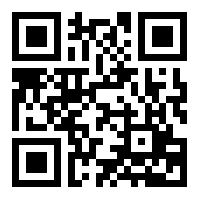All teachers use red pens to grade student work, right? Not this teacher. I haven't used a red pen in over a decade. I have strong reasons for that.
Many years ago, I happened to be scanning some information about research on the psychological effects of colors. I was planning a major overhaul of my writing studio and wanted to find a paint color that would not interfere with my focus and productivity—or perhaps even enhance my productivity. That's when I ran across something that pointed out some unintended adverse effects of using a red pen for grading student work.
As we all know, red is an alarm color. Red signals danger, right? So it's alarming—perhaps downright scary—to see red. That works great when you are designing a stop sign or painting an alarm box. But perhaps it's not so great when you are trying to provide helpful feedback.
Yes, I know that red ink stands out from the black or blue ink in student work so it can be easily distinguished. But you know what? So does green ink!
I've found that making comments in green, whether praising a great effort or correcting an error, has an overall positive effect on reactions by my students. Green is the color of growth and reassurance, after all. A whole different signal than red's message of danger and anger.
There's some evidence that blue ink may be a better choice. But some of my students use blue ink themselves, so my comments would blend in too much. I've had good luck with green, so I'm sticking with it for now.
It may just be that by switching to green ink, it was me that changed. Perhaps every time I grade with a green pen, I'm reminded that I want to be nurturing and positive in my feedback—not mean and condescending.
Don't take my word for it! Try it yourself. I realize that this seems silly and trivial, but it works. I doubt whether you'll go back to red for grading again.
What can we use from this in teaching undergraduate A&P?
- Grading papers and assigning grades in green sends a nurturing signal, not an angry message.
- Providing written feedback in green to colleagues (peers, supervisors, subordinates) maintains a positive, constructive tone rather than an angry tone.
Want to know more?
Color and psychological functioning: The effect of red on performance attainment.
- Elliot, A J. et al. Journal of Experimental Psychology: General, Vol 136(1), Feb 2007, 154-168. doi: 10.1037/0096-3445.136.1.154
- Research reporting a negative effect of using red in learning situations.
- my-ap.us/1qhNrNp
EFFECTS OF FOUR PSYCHOLOGICAL PRIMARY COLORS ON ANXIETY STATE.
- KW Jacobs and J. Suess Perceptual and Motor Skills 1975,Volume 41, Issue , pp. 207-210. doi: 10.2466/pms.1975.41.1.207
- Research article showing that red tends to increase anxiety levels in undergraduates.
- my-ap.us/VR3vud
Parents to teachers: No more red pencils
- Associated Press. 4 March 2005
- Article on reactions to grading in red.
- my-ap.us/1vnk7JG
Red Ink May Lead to Lower Grades
- Guy Raz National Public Radio 29 May 2010
- Audio reporting on the unintended effects of color use in grading—actually affecting the grade.
- my-ap.us/1rAJR4M
School Bans Teachers From Using Red Ink Because Everyone Knows Red Ink Is Mean
- Maria Guido Mommyish 20 March 2014
- Blog post by a mom reacting to a local school's ban on grading in red ink.
- my-ap.us/1lwvV9v
Update
- Listen to the The A&P Professor podcast segment about this strategy. theAPprofessor.org/127
Image credits: AnimationFactory.com, E. Jensen






